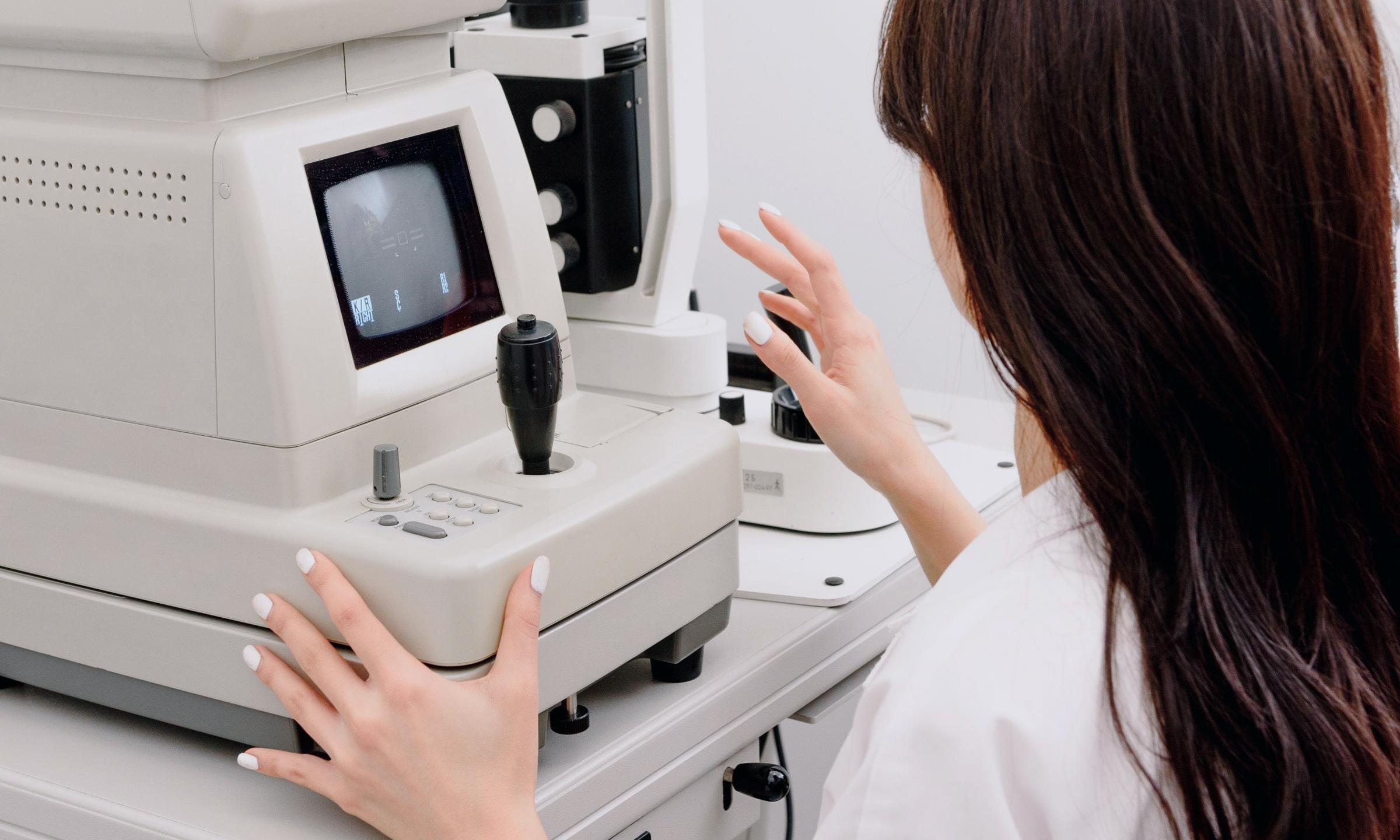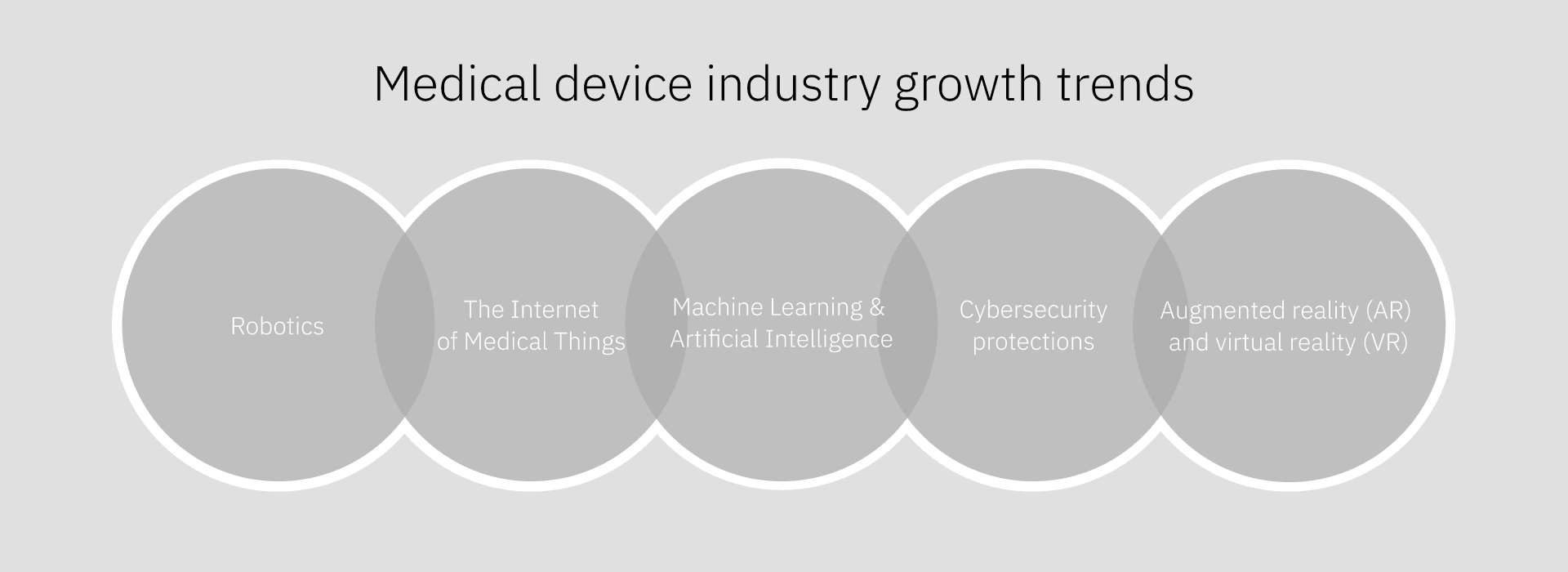
Medical device software: Industry statistics and trends

The global medical technology industry is worth nearly half a trillion dollars, and encompasses a wide variety of products, including pacemakers, imaging instruments, dialysis machines, and implants. The medical device market growth rate is expected to reach 6.1% per year from 2021 onwards, after a decline due to COVID-19-induced factory lockdowns.
In this article, we'll take a look at some of the most interesting medical device industry statistics available, to get an overview of where the global medical device market is today and where it's going in the future.
Which global medical device markets have the highest forecast revenues in 2030?
The U.S. healthcare market is still the dominant force in medical device sales, but China and India are both growing at twice the pace of the overall market, thanks to factors such as rising demand for healthcare, local government incentives, and healthcare reform, based on data from KPMG.

The medical device industry in the United States
In the United States, the medical device industry accounts for nearly 2 million jobs. Most medical device companies are small: More than 80 percent of them have 50 or fewer employees, and many of them have no sales revenue yet. Medical device companies spend a higher percentage of their annual budget on R&D than most industries, averaging 7 percent of revenue, according to SelectUSA.
Industry subsectors
Some of the most common categories of medical devices made in the United States include:
- Dental equipment and supplies
That includes a wide variety of equipment, instruments, and supplies used by dentists, hygienists, and laboratories, including dental hand instruments, plaster, drills, and amalgams.
- Electro-magnetic equipment
Includes powered devices such as pacemakers, patient-monitoring systems, MRI machines, diagnostic imaging equipment, and ultrasound scanning devices.
- In-vitro diagnostics
This category includes chemical, biological, or radioactive substances used for diagnostic tests performed in test tubes, Petri dishes, machines and other diagnostic test-type devices.
- Irradiation apparatuses
This includes X-ray devices and other types of diagnostic imaging and computed tomography equipment.
- Surgical and medical instruments
This includes devices such as anesthesia apparatuses, orthopedic instruments, optical diagnostic apparatuses, blood transfusion devices, syringes, hypodermic needles, and catheters.
- Surgical appliances and supplies
This includes artificial joints and limbs, stents, orthopedic appliances, surgical dressings, disposable surgical drapes, hydrotherapy appliances, surgical kits, rubber medical and surgical gloves, and wheelchairs.
COVID's impact on the global medical device industry
Throughout 2020 and 2021, the pandemic has had a significant impact on the medical device market worldwide, as many manufacturing plants were briefly shut down, and elective medical procedures were delayed. Simultaneously, the high hospitalization rates of COVID-19 patients led to a global shortage of medical devices that support critical care—particularly ventilators and personal protective equipment (PPE). That led to a huge spur of innovation and an increase in production and sales of these types of medical devices and PPE, with many being purchased by national governments. For example, the U.S. government paid nearly $500m to order 30,000 ventilators from General Motors under the Defense Production Act. One company, ResMed, reported that ventilator production had tripled in 2020 compared to the previous year. However, many other medical device sales were lower than in previous years as a result of delayed elective procedures or problems with supply chains for production.
Medical device industry growth trends

- Use of robotics
Minimally invasive robotic surgery (MIRS) has become a very popular discipline, prompting a significant rise in devices such as the Cyber knife, Gamma knife, and the da Vinci surgical robot. This category has grown from a market size of $5.5 billion in 2018 to $24 billion by 2025.
- The Internet of Medical Things (IoMT)
The connected devices field has innumerable applications in the medical industry, including many devices with smart sensors that can monitor biomedical signals and diagnose diseases without the need for human support. The market is set to grow to $285.5 billion by 2029.
- Machine learning and artificial intelligence (AI)
AI has been one of the most significant developments in the medical technology field, enabling physicians and other medical practitioners to make more accurate diagnoses based on AI algorithms. In addition to diagnostics, AI is often applied to processes including treatment protocol development, drug development, personalized medicine, and patient monitoring and care.
- Cybersecurity protections
As IoMT devices become more popular, it’s become ever more critical to secure sensitive patient and organizational data against potential breaches, and, more critically, against medical device hacks that could put patients at risk. New technologies focused on securing medical devices and protecting data are gaining in prominence, and many such technologies are being integrated into the devices at production.
- Augmented reality (AR) and virtual reality (VR)
Augmented reality and virtual reality have been used for many important purposes in the healthcare industry, and BIS Research anticipates that the global market for AR and VR in healthcare will grow to $11.1 billion by 2025. These technologies are being used to allow researchers to gather data in 3D formats, and to provide simulated training for people in the healthcare field. These technologies can also be used to provide patients with visualizations to help them understand how a surgery or treatment will work, among many other purposes.
The many technology innovations taking place in the global medical device industry are primed to support medical training and patient education, improve diagnostics, provide better treatment options, improve patient care, and improve overall patient outcomes.





